How Much Time Earth Takes to Revolve Around Sun
EARTH'S ORBIT AND ROTATION DEFINITION
The Earth moves in two different ways. Earth orbits the sun once a year and rotates on its axis once a day. The Earth's orbit makes a circle around the sun. At the same time the Earth orbits around the sun, it also spins. In science, we call that rotating on its axis. Since the Earth orbits the sun AND rotates on its axis at the same time we experience seasons, day and night, and changing shadows throughout the day.
To better understand Earth's rotation around the sun….
LET'S BREAK IT DOWN!
Earth's rotation on its axis occurs every 24 hours.

Earth is always moving. Each day, the Earth makes one complete rotation on its axis. The axis is the imaginary line through the earth that extends from the North Pole to the South Pole.
As Earth rotates, it seems like the sun is moving across the sky, but it's really the Earth that is spinning. It takes 24 hours to complete one rotation, which is why there are 24 hours in one day.
In other words, if the sun is visible in the morning starting around 6:00 AM, the Earth will spin completely around by the next morning at 6:00 AM and you will see the sun in about the same place.
The Earth orbits around the sun every 365.25 days.
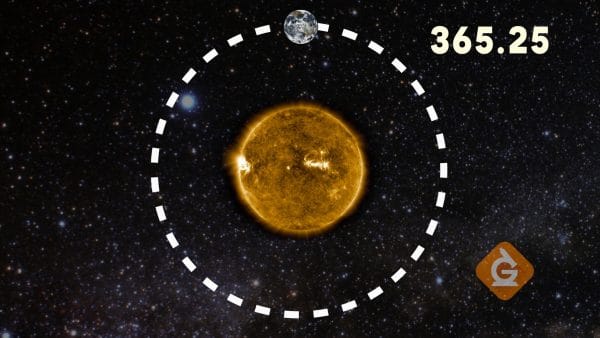
While the Earth is rotating on its axis, it also orbits the sun. It takes a little more than 365 days for the Earth to make a complete trip around the sun.
Other planets have different orbital times. It takes only 87 days for Mercury to orbit the sun, but 12 years for Jupiter to make the journey.
Scientists used to think that the Earth was the center of the universe, but phenomena such as stellar parallax have proven that this is not true because the position of some stars change as we orbit.
Earth's rotation causes observable patterns like night and day.
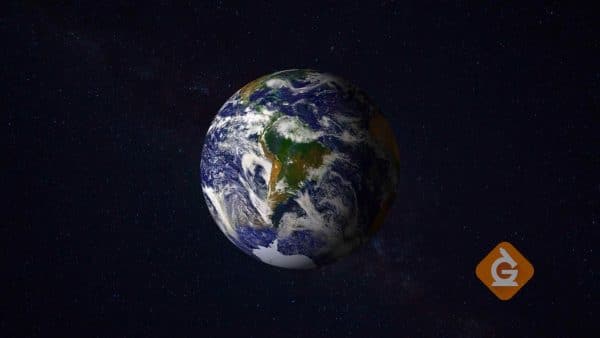
The light from the sun shines on half of the Earth at any given time. That side is warmer and brighter. The other side of the Earth faces away from the sun (it's dark) so it is cooler and darker. Since the Earth is always spinning, there is a line between day and night and we pass through it each day.
Another pattern caused by the Earth's rotation is the length of our shadows. Shadows are longer in the afternoon than at noon. If you study shadows and their appearance throughout the day, you can use this information to help estimate the time. Sundials are designed using this idea.
It is important to remember that the sun doesn't travel across the sky. It looks that way because the Earth is spinning.
Earth's orbit causes some stars to be visible only in certain months.
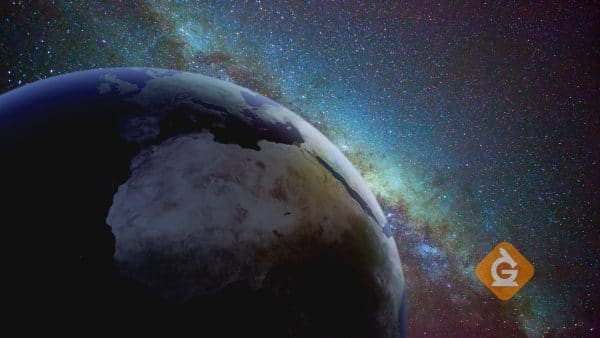
Another pattern we can observe due to the earth's orbit around the sun has to do with constellations. The night sky looks different throughout the year because we can only see in one direction (away from the sun). As the Earth orbits, our view changes. This is why we see different constellations at different times of the year.
EXAMPLES OF EARTH'S ORBIT AND ROTATION
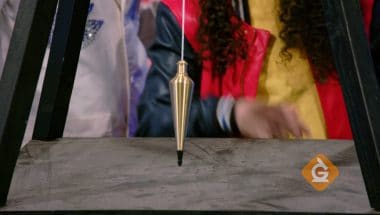
Scientists use the movement of pendulums to provide evidence that the Earth is rotating. A pendulum is a weight hanging from a fixed point so that it can swing freely back and forth. When you move the base of the pendulum, the weight continues to travel in the same path.
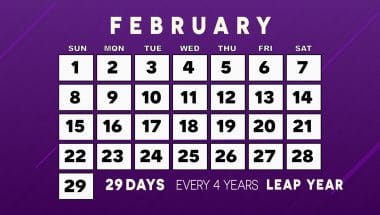
Leap years have one extra day added to February. Since it takes 365.25 days to complete one orbit, we account for the extra .25 days by adding an extra day to our calendar every four years. So most of the time our calendar has 365 days, but in a leap year it has 366 days!
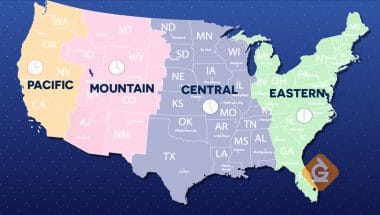
There are 24 time zones on Earth.The globe is divided into time zones to help us account for the movement of the sun's light across the globe. This way 9:00 am is morning everywhere. Otherwise, 9:00 am would be morning for you but night somewhere else — it would get confusing.
VOCABULARY ON EARTH'S ORBIT AND ROTATION
Earth's Orbit
An orbit is the path an object follows as it moves around another one. Earth moves in a circle around the sun once every 365.25 days. We call that path Earth's orbit.
Earth's Rotation
The action of the earth turning or spinning around its center. If you stand in one place and turn all the way around, you have rotated. The earth rotates (spins) once every 24 hours.
Solar system
Our solar system is made up of the sun, 8 planets and their moons. The planets all orbit around the sun and moons orbit around a planet.
Shadow
A dark shape made when an object blocks light. When you stand outside, your body blocks sunlight and that makes a shadow.
Foucault pendulum
A tool that provides evidence that the earth is rotating. It is made of a heavy weight hanging from a long wire which swings back and forth. The direction of the swinging ball appears to change due to Earth's rotation.
Constellations
A group of stars that form a recognizable shape such as the big dipper. Today there are about 90 constellations.
An ancient model of the solar system which we know today is not correct. It puts earth at the center of the solar system and says that everything orbits around the earth. "Geo" means earth and "centric" means in the center. Today we know that the earth orbits around the sun.
A model of the solar system which puts the Sun at the center and says that the plants orbit around the sun. "Helio" means relating to the sun and "centric" means in the center. Today we know that this model is correct.
The apparent shift of position of some stars through the year. This was not able to be explained by the Geocentric model which said that everything orbited the earth. The Heliocentric model was able to explain stellar parallax.
A year with one additional day added. We have leap years every 4 years because one orbit of the earth around the sun is 365.25 days. Our normal calendar has 365 days so every 4 years we have a leap year which adds an extra day.
An area on Earth that has a specific time that all people living there can set their clocks to. There are 24 different time zones.
An ancient tool used to tell time during the day. Part of it casts a shadow onto a flat surface marked in hours. It works due to Earth's rotation.
EARTH'S ORBIT AND ROTATION DISCUSSION QUESTIONS
What evidence do we have that the Earth rotates?
An invention called a Foucault pendulum provides evidence that the Earth is rotating on its axis. The swinging pendulum would always trace a straight line as it swings back and forth if it were sitting on an unmoving surface. However, as time goes by the path of the pendulum changes, providing evidence that the surface it is sitting on (the earth) is rotating.
Why can we only see certain planets at certain times?
Earth and all the other planets in our solar system are both rotating and orbiting the sun. Sometimes planets are on the same side of the sun and sometimes on opposite sides. The view of planets from earth changes all the time.
How are our 24 time zones related to Earth's rotation?
Each day the sun appears to rise, move across the sky and set. However, this doesn't happen at the same time in every location on Earth. To adjust our clocks so that everyone has daytime during the same hours, it is necessary to use time zones. This way, anywhere you are on earth, the sun will be as high in the sky as it can be at noon.
Why is it sometimes not practical to use to scale models when representing objects in space?
Due to the vast scale of objects in space, it is not always practical to use scale models. For example, if the sun was modeled to be the size of a baseball, Earth would need to be smaller than a grain of rice (2 mm)! You would barely be able to see it. Also, if you modeled the distance to scale, the baseball would be about 100 feet away from the tiny grain of rice. While accurate, it is hard to study something so tiny and far apart.
How Much Time Earth Takes to Revolve Around Sun
Source: https://www.generationgenius.com/earth-rotation-and-orbit/